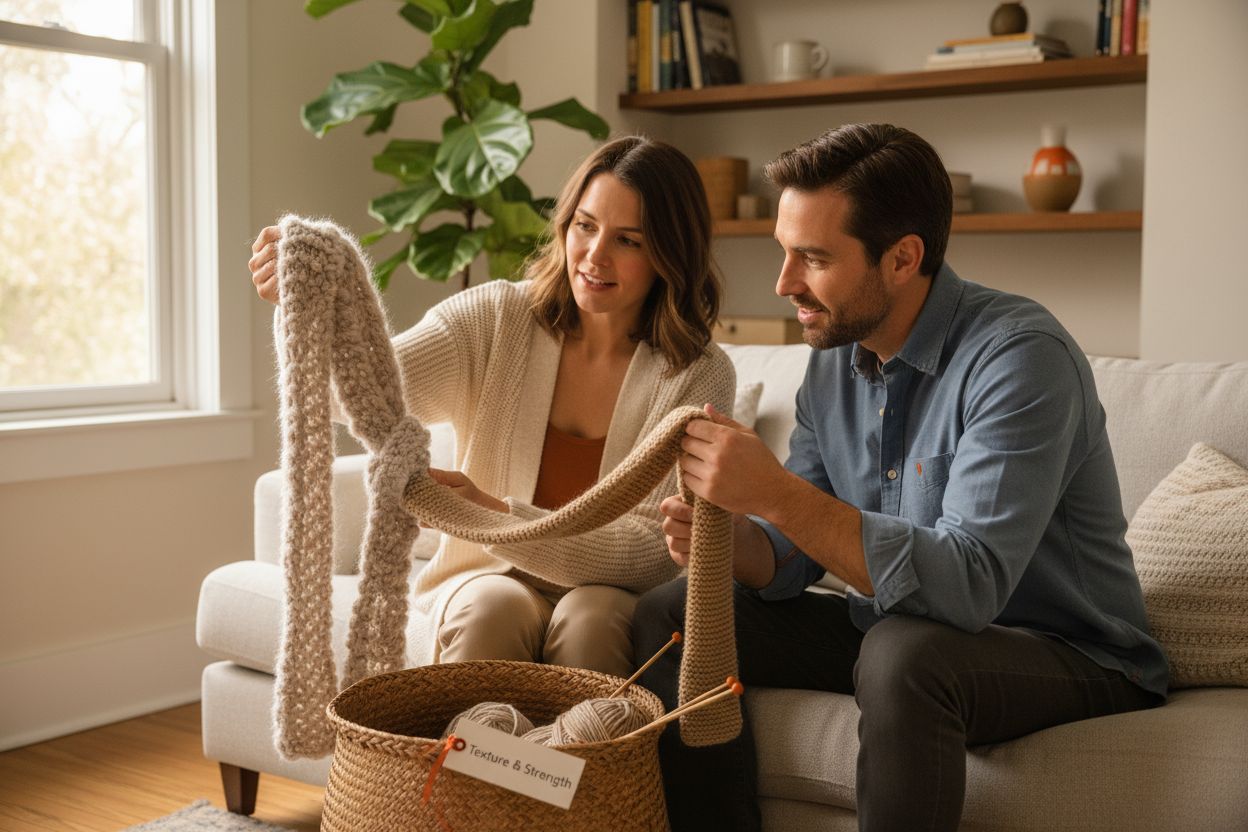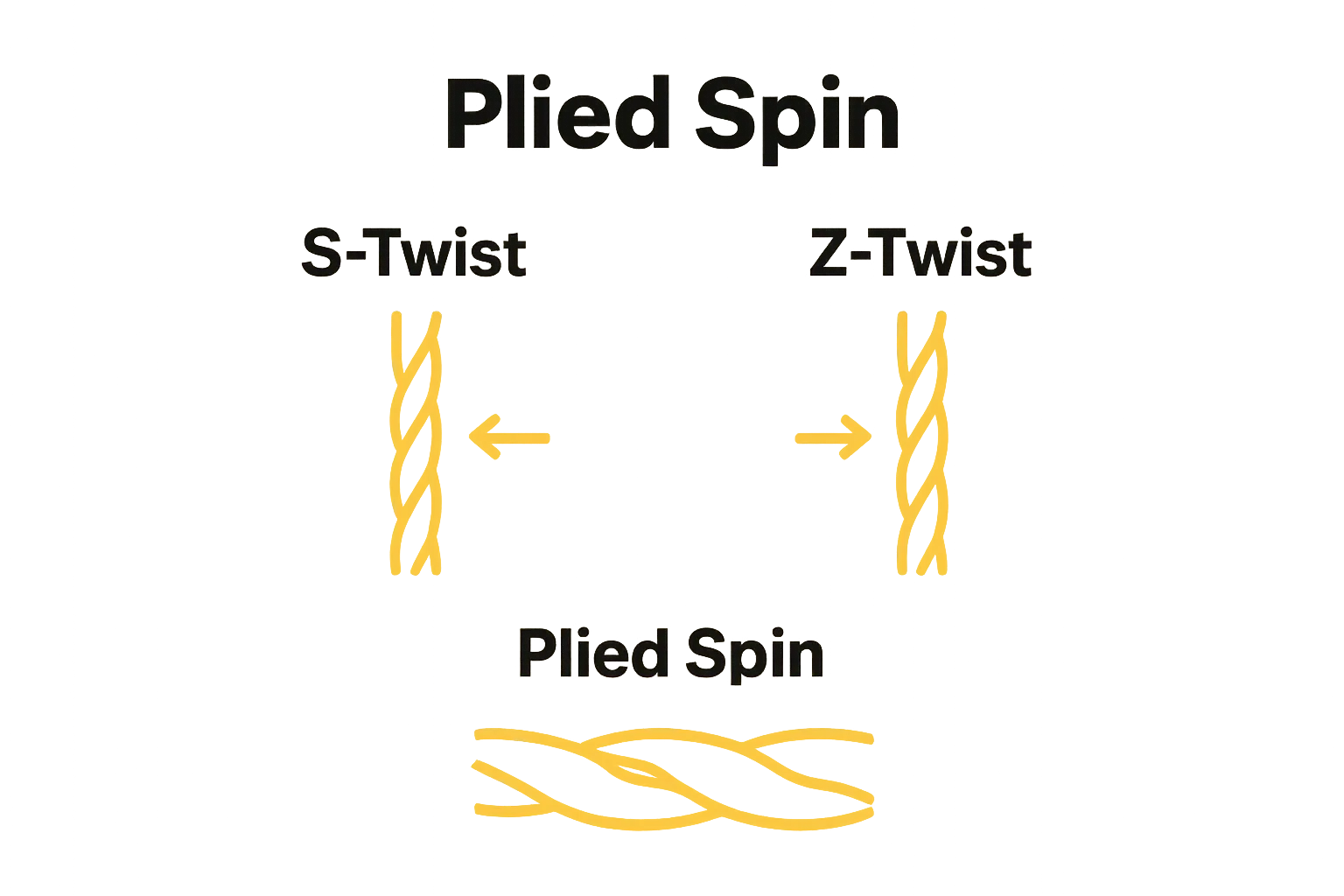
Understanding the Role of Yarn Spin in Crafting
Yarn spin is at the heart of every handmade scarf, cozy sweater, and heirloom quilt. People often think it is just about twisting loose fibers together, but the real magic comes from how much the technique changes the yarn’s strength and texture. One surprising detail is that tightly spun yarn can be up to twice as strong as loosely spun alternatives. That simple twist can decide whether your project lasts for years or frays in a single season.
Table of Contents
- What Is Yarn Spin And How Does It Work?
- Why Yarn Spin Matters In Texture And Strength
- The Impact Of Yarn Spin On Knitting And Crochet
- Exploring Different Yarn Spins And Their Uses
Quick Summary
| Takeaway | Explanation |
|---|---|
| Yarn spinning transforms fibers into usable thread. | The process of yarn spinning involves drawing and twisting raw fibers into a continuous, strong strand for crafting purposes. |
| Spinning technique affects performance and texture. | Different spinning methods lead to variations in yarn qualities such as softness, strength, and durability, influencing crafting outcomes. |
| Twist direction changes stitch definition. | The degree of yarn twist determines how stitches appear in a project, impacting overall fabric structure and clarity. |
| Various spins serve different applications. | Techniques like woolen and worsted spins cater to specific needs, affecting properties like warmth and texture in the final product. |
| Understanding yarn spin enhances crafting decisions. | By mastering yarn spinning, crafters can make informed choices for their projects, ultimately improving design and functionality. |
What is Yarn Spin and How Does It Work?
Yarn spinning represents a fundamental textile process that transforms loose fibers into a continuous, strong thread suitable for crafting. At its core, yarn spin is about converting raw textile materials like cotton, wool, or synthetic fibers into a coherent, usable strand through controlled drawing and twisting.
The Fundamental Mechanics of Spinning
The role of yarn spin begins with fiber alignment and tension. According to textile engineering principles, spinning involves systematically drawing out individual fibers and twisting them together to create a unified thread. This process determines critical yarn characteristics such as strength, thickness, and overall performance.
Key aspects of the spinning mechanism include:
- Fiber Preparation: Selecting and cleaning raw fibers
- Drawing: Aligning and stretching fibers into a consistent strand
- Twisting: Applying rotational force to bind fibers together
- Tension Control: Maintaining uniform thickness and strength
Yarn Spin Techniques and Variations
Crafters encounter multiple spinning techniques, each producing unique thread properties. Traditional methods like hand spinning using a spindle contrast with modern mechanical spinning in textile mills.
The chosen technique dramatically influences yarn characteristics, affecting everything from texture to durability.
For crafting enthusiasts looking to understand more about yarn fundamentals, our comprehensive guide on yarn basics offers additional insights into how different spinning approaches impact your creative projects.
Why Yarn Spin Matters in Texture and Strength
Yarn spin is more than a technical process. It directly impacts the performance, feel, and durability of crafted items. The subtle manipulation of fiber alignment and twist determines how a yarn will behave during crafting and after completion.
Impact on Yarn Characteristics
Research from textile engineering experts reveals that yarn spin influences multiple critical attributes. The twist direction and intensity can dramatically change a yarn’s fundamental properties.
Key yarn characteristics affected by spinning include:
- Tensile Strength: Higher twist increases overall thread durability
- Surface Texture: Twist determines smoothness and softness
- Fiber Cohesion: Proper spinning ensures fibers remain tightly bound
- Elasticity: Spinning technique impacts yarn’s stretch and recovery
Performance Implications for Crafters
Different spinning techniques produce yarns with unique performance profiles. A tightly spun yarn might provide exceptional durability for heavy-use items like winter scarves, while a loosely spun yarn creates softer, more delicate textures perfect for lightweight shawls.
Crafters seeking deeper insights into material selection can explore our comprehensive guide on yarn quality, which further explains how spinning techniques influence craft outcomes.
Understanding yarn spin empowers crafters to make informed choices. The right spinning technique transforms raw fibers into a material that not only looks beautiful but performs exceptionally in creative projects.

The Impact of Yarn Spin on Knitting and Crochet
Yarn spin profoundly influences the techniques and outcomes of both knitting and crochet. Understanding how spinning affects thread behavior enables crafters to make more informed design choices and achieve desired project results.
Stitch Definition and Fabric Structure
According to textile research, the degree of twist dramatically transforms how stitches appear and perform. Highly twisted yarns create sharp, defined stitches with crisp edges, while low-twist yarns produce softer, more fluid fabric textures.
Key considerations for crafters include:
- Stitch Clarity: Tightly spun yarns provide excellent stitch definition
- Fabric Drape: Twist intensity determines how fabric moves and hangs
- Structural Integrity: Spinning technique impacts overall project stability
- Texture Performance: Different spins create varying surface qualities
Practical Implications for Crafting Techniques
The yarn spin directly influences crafting approach. A tightly spun yarn works excellently for intricate patterns requiring precise stitch definition, such as cable knitting or complex crochet motifs. Conversely, loosely spun yarns excel in projects prioritizing softness and fluidity.
Crafters interested in expanding their technical understanding can learn more about advanced knitting techniques, which further explore how yarn characteristics impact creative possibilities.
Mastering yarn spin nuances transforms crafting from a simple hobby to an art form where material selection becomes a critical design decision.
The table below summarizes the key characteristics affected by yarn spinning, making it easier to understand how spin choices influence crafting outcomes.
| Characteristic | High Twist (Tightly Spun) | Low Twist (Loosely Spun) |
|---|---|---|
| Strength | High durability; resists fraying | Softer but less durable |
| Stitch Definition | Crisp, well-defined | Fluid, less defined |
| Texture | Smooth, firmer feel | Soft, fluffy, airy |
| Elasticity | Moderate to low | Higher stretch and flexibility |
| Best For | Heavy-use items, intricate patterns | Light, drapey projects, soft accessories |
Exploring Different Yarn Spins and Their Uses
Yarn spinning is not a monolithic process but a nuanced craft with multiple techniques tailored to specific project requirements. Each spinning method creates unique yarn characteristics that impact the final textile’s performance, appearance, and feel.
Fundamental Spin Categories
According to textile manufacturing research, yarn spins can be categorized based on twist direction, intensity, and fiber alignment. The primary spin types significantly influence a yarn’s ultimate functionality.
Key yarn spin categories include:

- S-Twist: Fibers spun counterclockwise, providing increased stability
- Z-Twist: Fibers spun clockwise, offering different structural properties
- Single Spin: One-directional twist creating simple, straightforward yarns
- Plied Spin: Multiple strands twisted together for enhanced strength
Specialized Spinning Applications
Different spinning techniques serve specific crafting needs. Woolen spin creates lofty, soft yarns ideal for warm garments, while worsted spin produces smoother, more compact threads perfect for structured projects. The spinning method directly determines a yarn’s thermal properties, durability, and visual texture.
To help clarify the impact of different yarn spinning methods, the following table compares the characteristics and uses of woolen and worsted yarn spins.
| Spin Type | Fiber Alignment | Yarn Characteristics | Common Uses |
|---|---|---|---|
| Woolen Spin | Disorganized, airy | Soft, lofty, warm; less durable | Scarves, hats, cozy garments |
| Worsted Spin | Parallel, smooth | Firm, strong, smooth, sturdy | Sweaters, socks, structured items |
Crafters seeking to expand their material knowledge can explore our comprehensive guide on worsted yarn techniques, which provides deeper insights into specialized spinning approaches.
Understanding these nuanced spinning techniques empowers crafters to select precisely the right yarn for their creative vision, transforming raw fibers into purposeful, beautiful textiles.
Elevate Your Next Project With Perfectly Spun Yarn
If you have ever been frustrated by yarn that splits, lacks strength, or leaves your stitches looking inconsistent, you are not alone. As this article outlines, yarn spin directly affects every step of your creative journey. The right twist can transform your experience and your results, giving you the clarity and softness you want while ensuring your creations last.
Find yarns with the perfect spin for your crafts. Our curated selection meets the needs of every maker, from those pursuing crisp stitch definition to crafters who value softness and drape.
.png)
Experience the difference that expertly spun yarn can make in your knitting or crochet. Visit CRAFTISS now to browse our yarn collection and discover why the right spin changes everything. Your next masterpiece is just a stitch away. Shop today and feel the improvement in every project.
Frequently Asked Questions
What is yarn spin and why is it important in crafting?
Yarn spin is the process of transforming raw fibers into a continuous thread through drawing and twisting. It affects the strength, texture, and performance of the yarn, making it crucial for the quality of crafted items.
How do different yarn spinning techniques affect the final product?
Different spinning techniques, such as hand spinning and mechanical spinning, create unique yarn characteristics. These can influence factors like durability, softness, and stitch definition, impacting knitting and crochet results.
What are the main categories of yarn spins?
The main yarn spin categories include S-twist, Z-twist, single spin, and plied spin. Each type affects the yarn’s stability, functionality, and overall performance in crafting.
How does yarn spin influence stitch definition in knitting and crochet?
The degree of twist in yarn directly impacts stitch clarity and fabric structure. Tightly spun yarns provide sharp stitch definition, while loosely spun yarns produce softer, more fluid textures.


